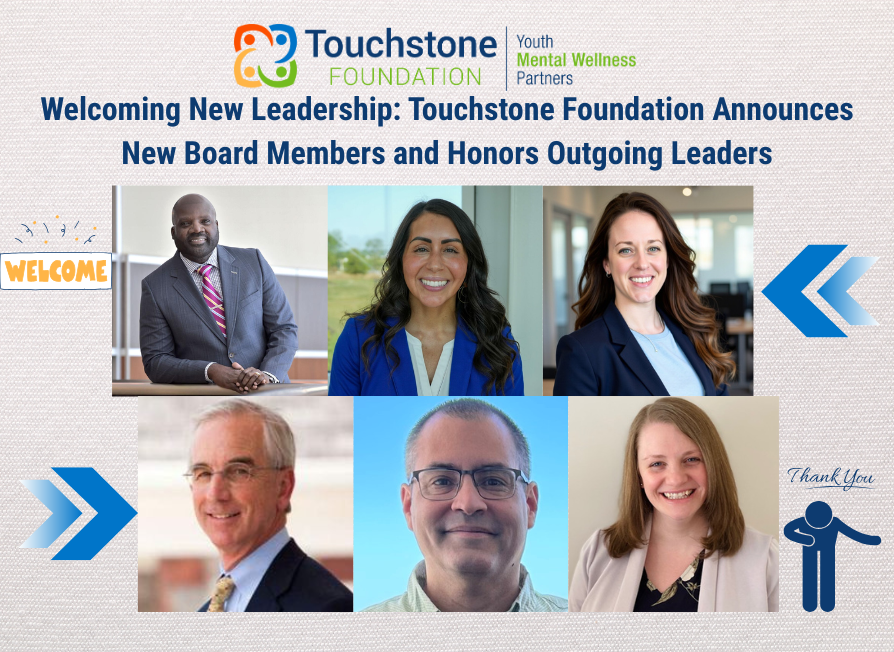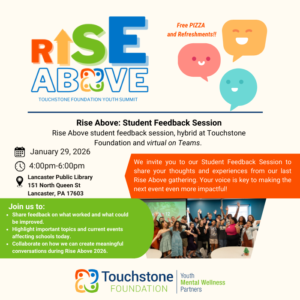
The Power of Kindness: An Interview with Educator Ramon Rivera
Kindness has the power to transform lives, especially in the classroom For students, feeling seen and valued can make all the difference in their academic and personal growth.
We spoke with Ramon Rivera, a dedicated member of Touchstone Foundation’s board of directors and a Middle School Life Science Teacher at Conestoga Valley School District.
With experience teaching in both Conestoga Valley and the School District of Lancaster, Rivera has witnessed firsthand the transformative power of kindness in the classroom and beyond. His insights highlight how small acts of kindness can shape students’ mental well-being and foster a culture of compassion in schools.
Understanding the Need for Kindness
“Many students carry emotional burdens that they don’t always know how to handle,” Rivera shares. “When an adult or a peer takes the time to recognize and praise their strengths, it can have a profound impact.”
Rivera emphasizes that small acts of kindness can make students feel truly valued, especially when they least expect it:
- They help students feel seen and appreciated.
- They provide emotional support during difficult times.
- They foster a sense of belonging and community.
- They encourage positive interactions among peers and educators.
Encouraging Kindness Matters
Acts of kindness may seem small, but their effects are significant. Rivera believes that kindness should be a daily practice, modeled by educators and reinforced within school communities.
“I have found that the best way to get students to change their behavior is for the teacher to model the behavior that is expected,” he explains. “We often take for granted that students have not been explicitly taught how to act in certain situations. As the primary adult role model in a school, a teacher has significant influence in shaping behavior simply by demonstrating the way they want students to interact with each other and with adults. A teacher who shows kindness to both colleagues and students will foster an environment where students are more likely to be kind in return.”
Recognizing and Reinforcing Kindness
Rivera has seen firsthand how a simple act of kindness can uplift a student. One of his favorite ways to spread positivity is by recognizing students when they least expect it.
“I like to surprise students by calling them out in the hall after I’ve seen them do something nice or kind, or if they’ve performed well in class or on an assignment. They often think they are in trouble, but when I praise them for the great thing they’ve done, you can see a smile spread across their face.”
Beyond praise, Rivera makes an effort to connect with students on a personal level, whether through shared hobbies, sports, speaking Spanish with them, or telling jokes. “When students realize that you care about them beyond just academics, it’s incredibly uplifting for them.”
Key Takeaways on How Kindness Presents Itself:
- Teachers recognize a student’s hard work and progress.
- Peers offer words of encouragement during challenges.
- Small gestures, like greeting students by name or acknowledging their interests, build meaningful connections.
Integrating Kindness into School Culture
Building a school culture that prioritizes kindness requires intentional effort. Rivera accounts that incorporating kindness-focused initiatives into both the curriculum and school environment can make a lasting impact.
“Integrating kindness into the curriculum can be easier in some subjects, like English Language Arts (ELA), where students can write about their feelings or read about acts of kindness. However, it’s a bit more challenging in subjects like math or science. As a Science Teacher, I’ve found that I can incorporate stories of scientists from various backgrounds, races, and ethnicities who overcame obstacles to make groundbreaking discoveries. These inspiring stories not only highlight their resilience but also motivate students to strive for their best.”
Additionally, Rivera’s school has an advisory period dedicated to Social and Emotional Learning, helping students develop skills to foster a welcoming and inclusive environment.
The Ripple Effect of Kindness
Rivera encourages students to understand the power they hold in making a difference, no matter their age.
“Students often feel that, because they’re young, they don’t have the power to make meaningful changes in the world. To challenge this belief, I share the story of high school science students who successfully presented in front of a planning commission board and prevented the construction of a factory that would have polluted a local stream. Using data from chemical analysis and macroinvertebrate studies, they proved the stream was clean and that the project should be stopped. These students used their voices and knowledge to make a significant environmental impact in their community. Every student has the same potential to create change if they’re willing to tap into it. Small actions can lead to big results.”
At his school, monthly fundraisers allow students and teachers to contribute small amounts of money to dress down for a day. These small contributions add up to thousands of dollars each year, supporting charities such as the Touchstone Foundation.
“It’s inspiring to think about how much better our world could be if small acts of kindness like these were repeated many times over in our communities, country, and across the globe.”
Leaving a Lasting Impact
Rivera’s message is clear: kindness has a profound impact on students, educators, and the broader community. By making kindness a daily practice, modeling it for students, and integrating it into school culture, educators can help create a more supportive and inclusive environment.
High schools can also incorporate these acts into their culture as Ramon accounts:
“Our school’s monthly fundraisers, where students and teachers contribute small amounts of money to dress down for a day. The funds raised go to support charities, and in total, we collect hundreds of dollars each month, adding up to thousands throughout the year. One of the recipients in the past two years has been the Touchstone Foundation. It’s inspiring to think about how much better our world could be if small acts of kindness like these were repeated many times over in our communities, country, and across the globe.”
“Every student has the power to create positive change,” he reminds us. “And small actions, when multiplied, can make an extraordinary difference.”
Join the Conversation, with some “Easy Caring Classroom Activities”:
Studies indicate that when students experience kindness, they are more likely to develop stronger emotional resilience and better social connections, find some activities to encourage kindness in your classroom! (The Compton Creative).
How has kindness impacted your school experience? Share your thoughts and ideas on how we can create more inclusive and supportive communities!





